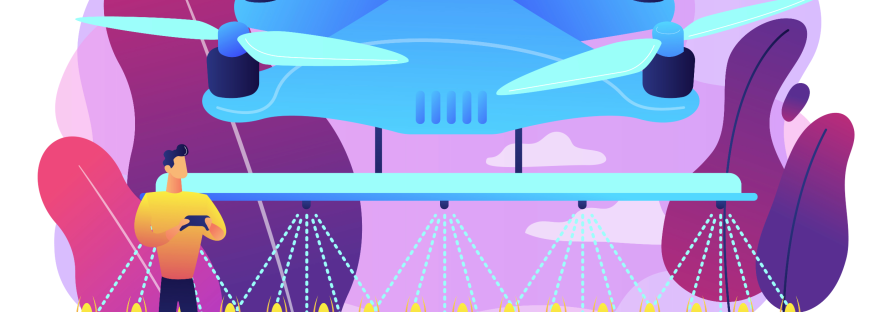The role of ChatGPT in GFAR’s establishment of the Global NARS Consortium.
posted by GFAR
The integration of Artificial Intelligence (AI) tools in agricultural research and innovation stands as a pivotal stride in technological advancement. This profound transformation has permeated various sectors, and agriculture, too, stands at the cusp of a major revolution. GFAR, or the Global Forum on Agricultural Research and Innovation, has harnessed the potential of AI, particularly through ChatGPT, in its pursuit of enhancing agricultural research and innovation, most notably in the establishment of the Global National Agricultural Research Systems (NARS) Consortium.
AI’s Evolution and agricultural development
Artificial Intelligence is not a recent phenomenon; its roots extend back decades. However, it wasn’t until nearly a decade ago that significant breakthroughs propelled this innovative technology into the limelight. AI encompasses technologies designed to mimic human cognitive processes. Within the agricultural context, this translates to the analysis of expansive databases, the assimilation of copious online information, and the ability to predict outcomes and adapt responses. The promise here is a substantial improvement in agricultural policies, practices, and, ultimately, productivity and sustainability. Among the vanguard of AI tools stands ChatGPT, an advanced creation from OpenAI. Leaning on the power of deep learning, it engages users in natural, real-time conversations, offering consistent and accurate responses across a diverse array of topics. Its adaptability renders it a potent solution for applications like chatbots and virtual assistance, fundamentally reshaping online interactions in a profoundly meaningful way.
AI’s potential in addressing Global Challenges in agriculture
Looking forward, projections indicate that the global population is poised to approach 10 billion by 2050. This imminent surge will exert unprecedented pressure on agriculture and food production systems. In response, AI emerges as a beacon of hope, offering a suite of technologies that promise greater precision and control in farming practices. Through AI, farmers and experts can glean profound insights into critical factors such as soil quality, temperature, and crop health, leading to a more efficient allocation of resources. This recognition of AI’s potential has prompted international organizations like the Food and Agriculture Organization of the United Nations (FAO) to forge partnerships with tech titans like IBM and Microsoft. Their shared commitment is to harness AI technologies in the service of sustainable food security and nutrition. The European Union, too, envisions coordinated AI applications as a catalyst for societal benefits across a spectrum of sectors.
Access and Ethical issues in the Implementation of AI in Agriculture
As the scope of AI in agriculture widens, accessibility, adequate regulation and normative guidance on their use becomes paramount. Ensuring that AI technologies are within reach of all stakeholders in the agri-food sector and can be used to serve their priorities and interests, including small-scale producers, is imperative and will also ensure their use to enhance equality and inclusion. It serves to address their unique challenges and amplify their contributions. Furthermore, AI is propelling advances in agricultural research and innovation, a feat notably exemplified by its application in constructing GFAR’s Global NARS Consortium (GNC).
Enabling the identification of NARS with AI-Driven Solutions
In the pursuit of this grand endeavor, the GFAR Secretariat turned to ChatGPT4 to augment the identification of National Agricultural Research Systems (NARS). The initial focus centered on partners assembled by GFAR and the Regional Fora. ChatGPT4’s prowess enabled GFAR to broaden its scope, identifying a broader range of potential institutions that met established criteria. This yielded a bounty of results, providing invaluable insights to refine the selection process. The organizations identified through AI underwent meticulous manual cross-checking, ensuring the utmost reliability. This methodical approach yielded an even more comprehensive list of potential NARS in each country.
Catalyzing Agricultural Development: Fostering complementarity between AI and Human Expertise
ChatGPT4’s contribution extends beyond mere data generation; it serves as a foundational bedrock for further exploration and validation. While manual verification remains indispensable, ChatGPT4’s ability to generate extensive and pertinent information signifies a significant leap forward. This initiative stands as a testament to the potent synergy between AI and human analytical expertise. It equips GFAR and its partners with a robust foundation to engage with these institutions and verify their current status. This innovative use of AI in establishing the GNC signals a paradigm shift in global agricultural research collaboration and management.
Charting the Course for Future AI-Driven Agricultural Endeavors
In conclusion, GFAR’s forthcoming publication will delve into this pioneering experience, charting potential future applications of AI in its mission. The integration of AI into agricultural research and innovation not only propels progress but also heralds a new era of possibilities in ensuring food security and sustainable agriculture for generations to come.


